Aeroplan points are the favorite currency of travel rewards enthusiasts because they can give unlimited value! While all travelers should have some (because they can also be redeemed in a more simple way), their potential for outsized value is amazing.
Let’s look at 18 good redemptions for Aeroplan points (plus a bonus one at the beginning), to give you concrete examples. These are sometimes called program sweet spots.
(And there’s a teaser about how it all works as an introduction… this is while you await more content, tips, and guides on all the major rewards programs — including Aeroplan — very soon!)
Basics of earning Aeroplan points
As with all good rewards programs, it’s obviously with credit cards that you’ll earn lots of Aeroplan points (if you don’t know that, read the basics of travel rewards).
| Best credit cards for Aeroplan points |
|||||||||||||||||||||||||||||||||||||||||||||||||||||||||||||||||||||||||||||||||||||||||||||||||||
|---|---|---|---|---|---|---|---|---|---|---|---|---|---|---|---|---|---|---|---|---|---|---|---|---|---|---|---|---|---|---|---|---|---|---|---|---|---|---|---|---|---|---|---|---|---|---|---|---|---|---|---|---|---|---|---|---|---|---|---|---|---|---|---|---|---|---|---|---|---|---|---|---|---|---|---|---|---|---|---|---|---|---|---|---|---|---|---|---|---|---|---|---|---|---|---|---|---|---|---|
 Valuation (BONUS) Valuation (BONUS)(≈ 5.9% back on $7.5k)
Rewards: ≈ $1041
Card fee: $599
Spend required:$7.5k in 3 mos.
Best for: 69,375 pts + unlimited AC lounges & other AC benefits
ends August 18th
|
|||||||||||||||||||||||||||||||||||||||||||||||||||||||||||||||||||||||||||||||||||||||||||||||||||
 Valuation (BONUS) Valuation (BONUS)(≈ 8.3% back on $9k)
Rewards: ≈ $900
Card fee: $156 ($12.99/mo.)
Spend required:$9k in 12 mos.
Best for: 60,000 pts + 5X the points best card in Canada
|
|||||||||||||||||||||||||||||||||||||||||||||||||||||||||||||||||||||||||||||||||||||||||||||||||||
 Valuation (BONUS) Valuation (BONUS)(≈ 5.3% back on $12k)
Rewards: ≈ $641
Annual fee: $0 $139
Spend required:$12k in 12 mos.
Best for: 40k pts with bonus (52,000 pts total) 40k + 12k on min. spend
|
|||||||||||||||||||||||||||||||||||||||||||||||||||||||||||||||||||||||||||||||||||||||||||||||||||
| Terms and conditions apply. Flytrippers editorial opinion only. Financial institutions are not responsible for maintaining the content on this site. Please click "See More" to see most up-to-date information. |
|
Best credit cards for Aeroplan points |
|||||||||||||||||||||||||||||||||||||||||||||||||||||||||||||||||||||||||||||||||||||||||||||||||||
|---|---|---|---|---|---|---|---|---|---|---|---|---|---|---|---|---|---|---|---|---|---|---|---|---|---|---|---|---|---|---|---|---|---|---|---|---|---|---|---|---|---|---|---|---|---|---|---|---|---|---|---|---|---|---|---|---|---|---|---|---|---|---|---|---|---|---|---|---|---|---|---|---|---|---|---|---|---|---|---|---|---|---|---|---|---|---|---|---|---|---|---|---|---|---|---|---|---|---|---|
 Valuation (BONUS) Valuation (BONUS)
Rewards: ≈ $1041
Card fee: $599 (≈ 5.9% back on $7.5k)
Spend required:
$7.5k in 3 mos.
Best for: 69,375 pts + unlimited AC lounges & other AC benefits
|
|||||||||||||||||||||||||||||||||||||||||||||||||||||||||||||||||||||||||||||||||||||||||||||||||||
 Valuation (BONUS) Valuation (BONUS)
Rewards: ≈ $900
Card fee: $156 ($12.99/mo.) (≈ 8.3% back on $9k)
Spend required:
$9k in 12 mos.
Best for: 60,000 pts + 5X the points best card in Canada
|
|||||||||||||||||||||||||||||||||||||||||||||||||||||||||||||||||||||||||||||||||||||||||||||||||||
 Valuation (BONUS) Valuation (BONUS)
Rewards: ≈ $641
Annual fee: $0 $139 (≈ 5.3% back on $12k)
Spend required:
$12k in 12 mos.
Best for: 40k pts with bonus (52,000 pts total) 40k + 12k on min. spend
|
|||||||||||||||||||||||||||||||||||||||||||||||||||||||||||||||||||||||||||||||||||||||||||||||||||
 Valuation (BONUS) Valuation (BONUS)
Rewards: ≈ $540
Card fee: $120 (≈ 14.0% back on $3k)
Spend required:
$3k in 3 mos. + $1k
Best for: 44,000 pts + a free bag on Air Canada
|
|||||||||||||||||||||||||||||||||||||||||||||||||||||||||||||||||||||||||||||||||||||||||||||||||||
|
No min. inc.
 Valuation (BONUS) Valuation (BONUS)
Rewards: ≈ $1901
Card fee: $799 (≈ 11.0% back on $10k)
Spend required:
$10k in 3 mos. spend $10k in 3 mos. &
make 1 purchase in months 15-17 Best for: 140,000 pts + unlimited PP lounges and $200 travel credit
|
|||||||||||||||||||||||||||||||||||||||||||||||||||||||||||||||||||||||||||||||||||||||||||||||||||
|
No min. inc.
 Valuation (BONUS) Valuation (BONUS)
Rewards: ≈ $1330
Card fee: $250 (≈ 9% back on $12k)
Spend required:
$12k in 12 mos. spend $1k/mo. for 12 mos. &
make 1 purchase in months 15-17 Best for: 92,000 pts + 4 lounges and $100 travel credit
|
|||||||||||||||||||||||||||||||||||||||||||||||||||||||||||||||||||||||||||||||||||||||||||||||||||
|
150k/200k
 Valuation (BONUS) Valuation (BONUS)
Rewards: ≈ $1126
Annual fee: $599 (≈ 2.2% back on $24k)
Spend required:
$24k in 12 mos.
Best for: 85k pts with bonus (115,000 pts total) 85k + 30k on min. spend
|
|||||||||||||||||||||||||||||||||||||||||||||||||||||||||||||||||||||||||||||||||||||||||||||||||||
 Valuation (BONUS) Valuation (BONUS)
Rewards: ≈ $315
Annual fee: $0 $89 (≈ 31.5% back on $1k)
Spend required:
$1k in 3 mos.
Best for: 20k pts with bonus (21,000 pts total) 20k + 1k on min. spend
|
|||||||||||||||||||||||||||||||||||||||||||||||||||||||||||||||||||||||||||||||||||||||||||||||||||
|
No min. inc.
 Valuation (BONUS) Valuation (BONUS)
Rewards: ≈ $814
Card fee: $199 (≈ 8.2% back on $7.5k)
Spend required:
$7.5k in 3 mos. spend $7.5k in 3 mos. &
make 1 purchase in months 15-17 Best for: 67,500 pts + simpler min. spend structure
|
|||||||||||||||||||||||||||||||||||||||||||||||||||||||||||||||||||||||||||||||||||||||||||||||||||
 Valuation (BONUS) Valuation (BONUS)
Rewards: ≈ $165
Card fee: $0 (≈ 16.5% back on $1k)
Spend required:
$1k in 3 mos.
Best for: 11,000 pts + no fees but way less value
|
|||||||||||||||||||||||||||||||||||||||||||||||||||||||||||||||||||||||||||||||||||||||||||||||||||
| Terms and conditions apply. Flytrippers editorial opinion only. Financial institutions are not responsible for maintaining the content on this site. Please click "See More" to see most up-to-date information. |
Right now, the TD Aeroplan Visa Infinite Card has a good Aeroplan welcome bonus.
It’ll give you 62,000 Aeroplan points!
The American Express Aeroplan Card, the American Express Gold Rewards Card, and the American Express Cobalt Card are the best alternatives for those who don’t earn the minimum income required. They still give you a lot of Aeroplan points, too! Also, the American Express Aeroplan Reserve Card and the TD Aeroplan Visa Infinite Privilege Card are the premium versions that give you plenty of benefits, like unlimited access to Air Canada’s Maple Leaf airport lounges in North America (only when flying on Air Canada or Star Alliance partners, though).
Basics of using Aeroplan points
Whatever the rewards program, there are 2 types of redemptions:
- More simple redemptions
- More lucrative redemptions
You can read the basics about the 2 types of rewards that exist for more details.
With Aeroplan points, your best options are more lucrative redemptions (if you want to be able to choose both types, get American Express points that are transferable to Aeroplan AND also offer more simple redemptions).
The Aeroplan program has 2 main redemption options that are very different:
- On the 40+ Aeroplan partner airlines
- Prices are fixed and guaranteed
- No matter the cash price
- Set by the award chart
- So more lucrative (potential value is unlimited)
- Available seats are limited
- So less simple (this option requires flexibility)
- Value is not limited
- Estimated value of ≈ 1.5¢ per Aeroplan point
- Prices are fixed and guaranteed
- On Air Canada
- Prices are not fixed and not guaranteed
- Related to the cash price (dynamic and variable)
- Can be above (or below) the partner award chart
- So less lucrative (outsized value impossible)
- Available seats are not limited
- So more simple (this option gives you flexibility)
- Value is limited
- Estimated value of ≈ 1.1¢ per Aeroplan point
- Prices are not fixed and not guaranteed
Aeroplan points are great for some specific flights in economy class and all flights in business class.
Redemptions on the 40+ partner airlines are the most interesting because the amount of points required never changes, no matter the price in cash. Those seats are obviously limited, that’s what allows for unlimited value. This option is by far the best if you want to maximize the value of your points and want to be more flexible. Sometimes flights on Air Canada are at the same price as on partners too.
Redemptions on Air Canada allow you to book any seat on any flight. That’s a lot more flexible, so necessarily it often gives you less value. When seats aren’t limited, prices can’t be fixed and so the value can’t be unlimited. But it’s simple.
Of course, as with all rewards programs, you should never redeem your Aeroplan points for anything other than travel, so I won’t even mention these terrible options in an article about good redemptions.
18 good uses for Aeroplan points
For every concrete example, I indicated the fixed amount of points required for flights on partner airlines obviously. The price can sometimes be the same on Air Canada, but seats at that price are limited on Air Canada too.
I have 10 examples of good redemptions of Aeroplan points from Canada (#1 to #9… and #18).
I have 8 examples of good redemptions of Aeroplan points around the world (from #10 to #17) because these points can be very valuable to travel around once you’re at your destination (for example if you got there with a cheap deal). Aeroplan points are amazing for great travelers who want to travel more (and discover more places).
And these are just a tiny fraction of the possibilities! You can mix and match all these examples as you wish, since airline points like Aeroplan really are fully customizable!
Good Aeroplan use #0 (bonus): Flights with stopovers
Flytrippers loves to give you bonuses and this time I’m listing it at the beginning!
A great feature of the Aeroplan program allows you to add a stopover for only 5,000 points! Even on a one-way ticket.
With a 5,000 points stopover, you can visit 2 incredible destinations of your choice for almost the same price as one. It’s a great value for avid travelers once again, those who want to experience as many places as possible. Because 2 destinations are often better than just 1!
Note that stopovers are only available outside of Canada and the United States, however.

Good Aeroplan use #1: Short-distance flights within North America
- Price (one-way): 6,000 points
- Distance: 0-500 miles
- Examples:
- Montréal–Washington
- Montréal–New York City
- Montréal–Boston
- Montréal–Philadelphia
- Toronto–Chicago
- Toronto–New York City
- Toronto–Boston
- Vancouver–Portland
- Calgary–Seattle

Perfect for weekend getaways to amazing cities (long weekend getaways are ideal for those who say time is the biggest obstacle to traveling more, not money).
Example of Aeroplan’s value (1 roundtrip):
- Normal cash price for tickets: ≈ $400
- Taxes to pay with Aeroplan: ≈ $150
- Savings with Aeroplan: ≈ $250
- Amount of Aeroplan points: 12,000
- Value per Aeroplan point: ≈ 2¢
Good Aeroplan use #2: Medium-distance flights within North America
- Price (one-way): 10,000 points
- Distance: 500-1,500 miles
- Examples:
- Montréal–Miami
- Montréal–Nashville
- Montréal–New Orleans
- Montréal–Chicago
- Toronto–Miami
- Toronto–New Orleans
- Vancouver–Los Angeles
- Calgary–Las Vegas
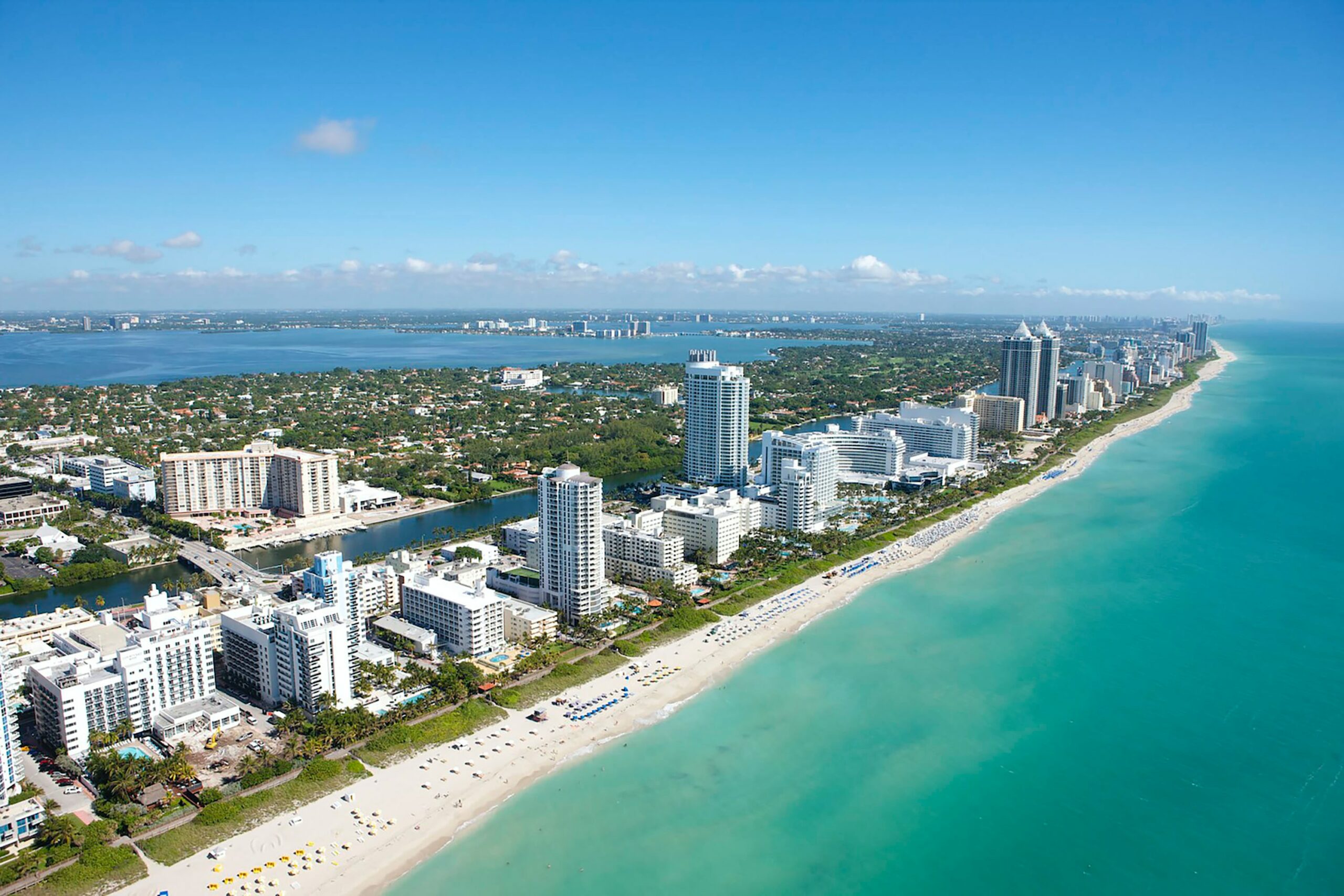
It covers a good part of eastern North America from Montréal and Toronto, including Florida, beloved by many Canadians. It covers popular destinations like California, Arizona, Nevada, and Utah from the Vancouver and Calgary/Edmonton. This gives you a lot of incredible destination options!
Example of Aeroplan’s value (1 roundtrip):
- Normal cash price for tickets: ≈ $450
- Taxes to pay with Aeroplan: ≈ $150
- Savings with Aeroplan: ≈ $300
- Amount of Aeroplan points: 20,000
- Value per Aeroplan point: ≈ 1.5¢
Good Aeroplan use #3: Long-distance flights within North America
- Price (one-way): 12,500 points
- Distance: 0-2,750 miles
- Examples:
- Montréal–Costa Rica
- Montréal–Mexico
- Montréal–Nicaragua
- Montréal–Jamaica
- Toronto–Costa Rica
- Vancouver–Cabo

Lots of possibilities for exotic “sunny” destinations with longer flights. It covers almost all of Central America from Toronto and Montréal.
Example of Aeroplan’s value (1 roundtrip):
- Normal cash price for tickets: ≈ $525
- Taxes to pay with Aeroplan: ≈ $150
- Savings with Aeroplan: ≈ $375
- Amount of Aeroplan points: 25,000
- Value per Aeroplan point: ≈ 1.5¢
Good use of Aeroplan #4: Flights to Western Europe or Morocco from Eastern Canada
- Price (one-way): 35,000 points
- Distance: 0-4,000 miles
- Examples:
- Vancouver–Tokyo
- Montréal–Madrid
- Montréal–Nice
- Montréal–Zurich
- Montréal–Marrakech
- Toronto–Lisbon

Vancouver to Tokyo is an amazing sweet spot. Since flights to Europe have become very affordable if you’re flexible (often around $500 roundtrip on our deals page), it’s not often a great way to redeem points for that. But many travelers still pay $1,200 to go to Europe, sadly…
I included Morocco to show you how sweet spots can come to be: it’s often considered more exotic since it’s in Africa, but since Aeroplan puts Morocco in the Atlantic zone and it’s closer to us than almost all European countries, it costs fewer points!
Example of Aeroplan’s value (1 roundtrip):
- Normal cash price for tickets: ≈ $1,200
- Taxes to pay with Aeroplan: ≈ $150
- Savings with Aeroplan: ≈ $1,050
- Amount of Aeroplan points: 70,000
- Value per Aeroplan point: ≈ 1.5¢
Good use of Aeroplan #5: Business class flights across the ocean
- Price (one-way): 60,000 points
- Distance: 0-4,000 miles
- Examples:
- Vancouver–Tokyo
- Toronto–Brussels
- Toronto–Lisbon
- Montréal–Madrid
- Montréal–Nice
- Montréal–Zurich
- Montréal–Milan
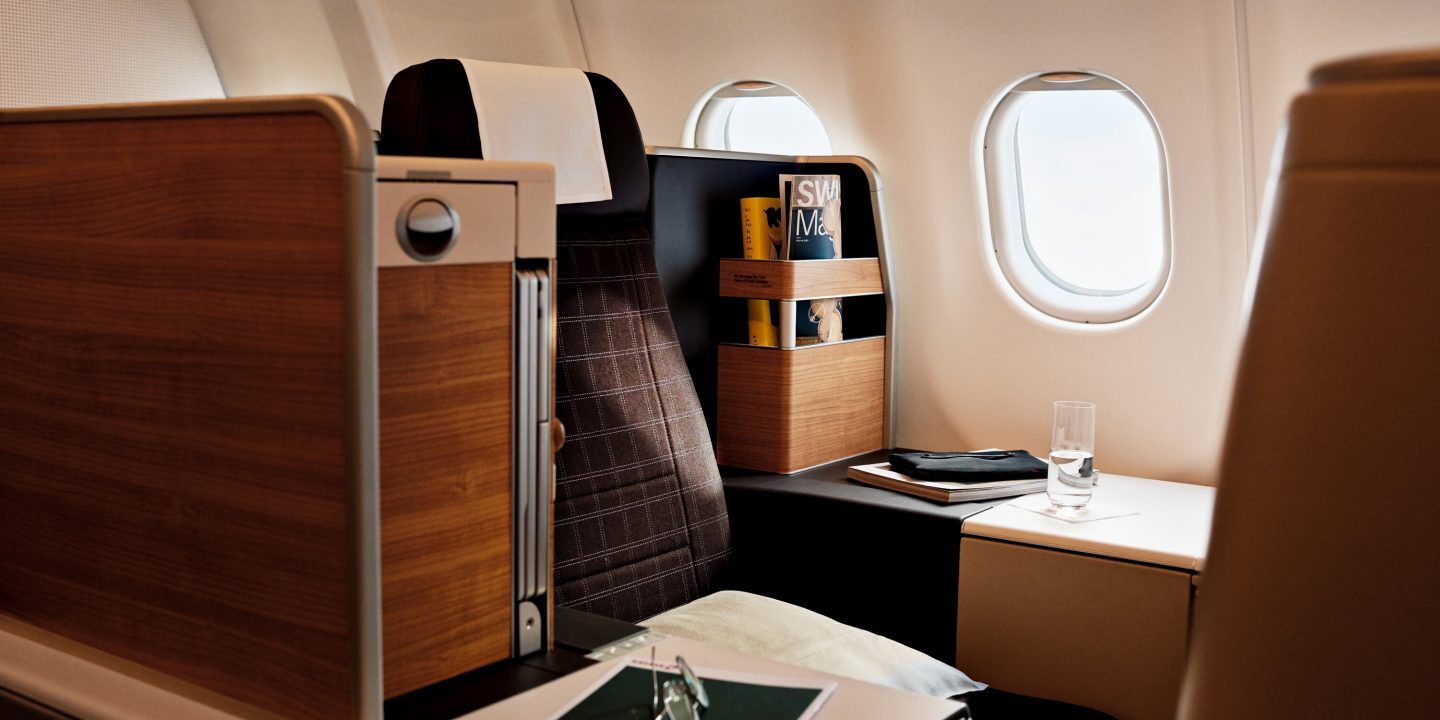
If you’re interested in business class flights (more quality, less quantity), you’ll get even more value. Aeroplan points are the go-to currency for fans of premium cabin travel. It’s expensive, so never pay with cash! It doesn’t make sense; get Aeroplan points — and fast!
If you want to take advantage of cheap roundtrips to Vancouver to position yourself there, one-way tickets from there to Tokyo are only 55,000 points one-way in business class if you prefer going to Asia.
Example of Aeroplan’s value (1 roundtrip):
- Normal cash price for tickets: ≈ $2,750
- Taxes to pay with Aeroplan: ≈ $250
- Savings with Aeroplan: ≈ $2,500
- Amount of Aeroplan points: 120,000
- Value per Aeroplan point: ≈ 2.1¢
Good use of Aeroplan #6: Flights to northern South America
- Price (one-way): 30,000 points
- Distance: 0-4,500 miles
- Examples:
- Toronto–Lima
- Montréal–Galápagos
- Montréal–Lima
- Montréal–Cartagena
- Montréal–Manaus
- Vancouver–Quito

This use of Aeroplan gives you many options in the northern part of the South American continent. Some of these destinations can be super expensive with cash, especially the exotic Galápagos Islands.
Example of Aeroplan’s value (1 roundtrip):
- Normal cash price for tickets: ≈ $1,100
- Taxes to pay with Aeroplan: ≈ $200
- Savings with Aeroplan: ≈ $900
- Amount of Aeroplan points: 60,000
- Value per Aeroplan point: ≈ 1.5¢
Good use of Aeroplan #7: Flights to southern South America
- Price (one-way): 40,000 points
- Distance: 4,500+ miles
- Examples:
- Toronto–Argentina
- Toronto–Chile
- Toronto–Uruguay
- Montreal–Argentina
- Montreal–Chile
- Montreal–Uruguay
- Vancouver–Chile
- Calgary–Argentina

For a few more points, you can actually go anywhere on the South American continent, including many destinations that are very rarely (or never) discounted in cash.
Example of Aeroplan’s value (1 roundtrip):
- Normal cash price for tickets: ≈ $1,400
- Taxes to pay with Aeroplan: ≈ $200
- Savings with Aeroplan: ≈ $1,200
- Amount of Aeroplan points: 80,000
- Value per Aeroplan point: ≈ 1.5¢
Good use of Aeroplan #8: Flights to Asia or the Pacific
- Price (one-way): 60,000 points
- Distance: 7,501-11,000 miles
- Examples:
- Toronto–Australia
- Montréal–Australia
- Montréal–Indonesia
- Montréal–Thailand
- Montréal–New Zealand
- Montréal–Bali
- Vancouver–Australia
- Calgary–New Zealand

Want to go very far? With 60,000 points, you have a one-way ticket to almost anywhere in the world. However, this is not necessarily the best use in terms of value. But certain destinations and dates are very expensive sometimes, especially right now.
And you can do 2 destinations in Southeast Asia or Southeast Asia AND Australia with a stopover, so it makes this a little more interesting!
Example of Aeroplan’s value (1 roundtrip):
- Normal cash price for tickets: ≈ $2,100
- Taxes to pay with Aeroplan: ≈ $200
- Savings with Aeroplan: ≈ $2,400
- Amount of Aeroplan points: 120,000
- Value per Aeroplan point: ≈ 1.5¢
Good use of Aeroplan #9: Flights to Northern Canada
- Price (one-way): 10,000 points
- Distance: 50-1,500 miles
- Examples:
- Montréal–Kuujjuaq
- Ottawa–Iqaluit
- Edmonton–Yellowknife

This one is a bit niche, but it’s really interesting. In terms of value per point, hard to do better than this (in economy class at least). Some folks pay a LOT of money for their flights to unique destinations in Northern Canada… but all routes operated by Canadian North are available at amazingly low prices with Aeroplan.
This sweet spot is ending soon, so don’t miss a detailed post about it.
Example of Aeroplan’s value (1 roundtrip):
- Normal cash price for tickets: ≈ $1,150
- Taxes to pay with Aeroplan: ≈ $150
- Savings with Aeroplan: ≈ $1,000
- Amount of Aeroplan points: 20,000
- Value per Aeroplan point: ≈ 5¢
Good Aeroplan use #10: Short-distance flights around Asia
- Price (one-way): 8,000 points
- Distance: 0-1,000 miles
- Examples:
- Chiang Mai–Krabi
- Bangkok–Singapore
- Tokyo–Okinawa
- Hong Kong–Taipei

If you grab one of our cheap flight deals to Asia (like Japan for $500 roundtrip or Southeast Asia for a bit more), you can save a lot of money once you get there with an impressive number of options.
These are flights around partner airlines’ hubs in Asia: ANA in Japan, EVA Air in Taiwan, Air China/Shenzhen Airlines/Juneyao Air in China, Cathay in Hong Kong, THAI in Thailand, Singapore Airlines in Singapore, Bamboo Airways in Vietnam, Asiana Airlines in South Korea, and Air India/Vistara in India.
Example of Aeroplan’s value (1 roundtrip):
- Normal cash price for tickets: ≈ $350
- Taxes to pay with Aeroplan: ≈ $100
- Savings with Aeroplan: ≈ $250
- Amount of Aeroplan points: 16,000
- Value per Aeroplan point: ≈ 1.6¢
Good Aeroplan use #11: Short-distance flights around Central America
- Price (one-way): 6,000 points
- Distance: 0-500 miles
- Examples:
- Guatemala–Nicaragua
- Costa Rica–Panama
- El Salvador–Honduras

If you grab one of our cheap flight deals to Central America (often $350 roundtrip), you can move around for a great price with Aeroplan if you want to avoid the infamous long bus rides across land borders. It’s also a great place to add a stopover as I did in January.
These are flights around partner airlines’ hubs in Central America and Mexico: Copa Airlines in Panama City and Avianca in Guatemala City, San Salvador, and San José.
Example of Aeroplan’s value (1 roundtrip):
- Normal cash price for tickets: ≈ $400
- Taxes to pay with Aeroplan: ≈ $200
- Savings with Aeroplan: ≈ $200
- Amount of Aeroplan points: 12,000
- Value per Aeroplan point: ≈ 1.7¢
Good Aeroplan use #12: Short-distance flights around South America
- Price (one-way): 15,000 points
- Distance: 1+ miles
- Examples:
- Argentina–Colombia
- Brazil–Galápagos
- Chile–Peru
- Bolivia–Brazil

This is an excellent sweet spot if you make your way to South America with our deals (we often spot Brazil for $500 roundtrip or Colombia for $400). Every one-way flight within the continent costs the same low amount of points, an amazing value especially since many of those flights are expensive in cash. It’s another great spot to add a stopover too.
These are flights around partner airlines’ hubs in South America: Avianca in Colombia and Ecuador as well as GOL and Azul in Brazil.
Example of Aeroplan’s value (1 roundtrip):
- Normal cash price for tickets: ≈ $600
- Taxes to pay with Aeroplan: ≈ $150
- Savings with Aeroplan: ≈ $450
- Amount of Aeroplan points: 30,000
- Value per Aeroplan point: ≈ 1.5¢
Good Aeroplan use #13: Short-distance flights around the Middle East
- Price (one-way): 7,500 points
- Distance: 0-1,000 miles
- Examples:
- Tel Aviv–Cairo
- Istanbul–Tbilisi
- Muscat–Dubai
- Cairo–Amman

If you’re interested in visiting Türkiye or Egypt (2 of the most affordable countries to travel to), you can also get many flights there (although domestic flights in Türkiye are pretty cheap — I’ve bought many $50 flights on my 5 trips there). You have many options in Gulf countries as well.
These are flights around partner airlines’ hubs in the Middle East and Northern Africa: Turkish Airlines in Istanbul, EGYPTAIR in Cairo, Etihad in Abu Dhabi, Oman Air in Muscat, and Gulf Air in Bahrain.
Example of Aeroplan’s value (1 roundtrip):
- Normal cash price for tickets: ≈ $450
- Taxes to pay with Aeroplan: ≈ $150
- Savings with Aeroplan: ≈ $300
- Amount of Aeroplan points: 15,000
- Value per Aeroplan point: ≈ 2¢
Good Aeroplan use #14: Short-distance flights around Africa
- Price (one-way): 7,500 points
- Distance: 0-1,000 miles
- Examples:
- Ethiopia–Kenya
- Mauritius–Madagascar
- Zambia–Zimbabwe
- Johannesburg–Durban

Africa is an underrated continent and flights in some parts can be very expensive in cash, which means you can get a lot of value with your points, despite the relatively small number of partners in such a large region.
These are flights around partner airlines’ hubs in the rest of Africa: South African Airways in South Africa and Ethiopian Airlines in Addis Ababa (they also have many “5th freedom” flights — routes that serve 2 cities that are not in the airline’s home country).
Example of Aeroplan’s value (1 roundtrip):
- Normal cash price for tickets: ≈ $500
- Taxes to pay with Aeroplan: ≈ $150
- Savings with Aeroplan: ≈ $350
- Amount of Aeroplan points: 15,000
- Value per Aeroplan point: ≈ 2.3¢
Good Aeroplan use #15: Short-distance flights around Australia or New Zealand
- Price (one-way): 8,000 points
- Distance: 0-1,000 miles
- Examples:
- Auckland–Christchurch
- Dunedin–Wellington
- Melbourne–Gold Coast
- Sydney–Tasmania

If you’re going to Australia or New Zealand, you can fly cheaply around there with Aeroplan, as I might do in November. Like many other places on this list, it’s especially great on peak dates or other times when the cash price is high.
These are flights around partner airlines’ hubs in Oceania: Air New Zealand in New Zealand and Virgin Australia in Australia.
Example of Aeroplan’s value (1 roundtrip):
- Normal cash price for tickets: ≈ $350
- Taxes to pay with Aeroplan: ≈ $100
- Savings with Aeroplan: ≈ $250
- Amount of Aeroplan points: 16,000
- Value per Aeroplan point: ≈ 1.6¢
Good Aeroplan use #16: Short-distance flights within Oceania
- Price (one-way): 12,500 points
- Distance: 1,001-2,000 miles
- Examples:
- Auckland–Fiji
- Auckland–New Caledonia
- Auckland–Samoa
- Brisbane–Vanuatu

Here’s an even better value if you’re in Australia or New Zealand: if you want to explore the exotic Pacific islands, the cash price is often super expensive. But with Aeroplan, you can make your way there at a decent price.
These are again flights on partner airlines in Oceania: Air New Zealand in New Zealand and Virgin Australia in Australia.
Example of Aeroplan’s value (1 roundtrip):
- Normal cash price for tickets: ≈ $600
- Taxes to pay with Aeroplan: ≈ $200
- Savings with Aeroplan: ≈ $400
- Amount of Aeroplan points: 25,000
- Value per Aeroplan point: ≈ 1.6¢
Good Aeroplan use #17: Short-distance flights around Europe
- Price (one-way): 8,000 points
- Distance: 0-1,000 miles
- Examples:
- Rome–Dubrovnik
- Munich–Athens
- Lisbon–Marrakech
- Warsaw–Oslo

While flights are very cheap in Europe if you’re flexible (like $9 cheap), they can be more expensive if you want more comfort, if you want more schedule options, if you aren’t flexible on your dates at all, or if you’re not well prepared either.
These are flights around partner airlines’ hubs in Europe: TAP Air Portugal in Lisbon, Brussels Airlines in Brussels, Lufthansa and Eurowings in Germany, SWISS in Zurich, Austrian in Vienna, Air Dolomiti in Italy, LOT Polish in Poland, Croatia Airlines in Zagreb, Air Serbia in Belgrade, Aegean and Olympic in Greece, as well as Scandinavian (SAS) in Sweden, Denmark, and Norway.
Example of Aeroplan’s value (1 roundtrip):
- Normal cash price for tickets: ≈ $350
- Taxes to pay with Aeroplan: ≈ $100
- Savings with Aeroplan: ≈ $250
- Amount of Aeroplan points: 16,000
- Value per Aeroplan point: ≈ 1.6¢
Good Aeroplan use #18: Mini-Round The World
- Price (total): 130,000 points (or 180,000 in business class with lie-flat seats)
- Distance: 0-11,000 miles per direction
- Examples: Montréal–Greece–Thailand–Japan–Montreal
The Mini-RTW was the old Aeroplan program’s holy grail, and it’s still possible to get an epic trip with the new rules. How about visiting Greece, Thailand, and Japan on the same trip, and going literally all around the world?
However, that requires 130,000 points so one welcome bonus alone won’t be enough. But you can simply earn more points with future cards afterwards! It’s really easy!
In fact, for just 180,000 points, you could even go on that epic journey in lie-flat business class seats if you prefer.
Here’s the type of itinerary you could get, which consists of 2 one-ways that cost 60,000 points and then 2 stopovers that cost 5,000 points each. This will allow you to visit 3 amazing destinations.
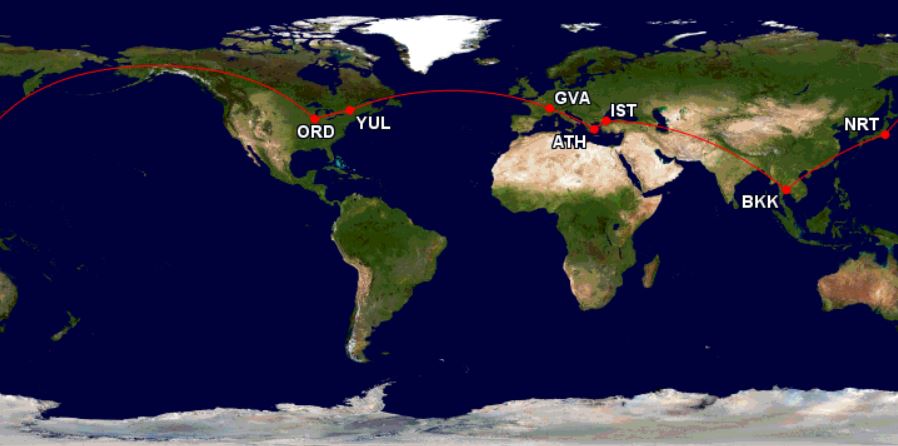
Example of Aeroplan’s value (1 roundtrip in economy class):
- Normal cash price for tickets: ≈ $2,500
- Taxes to pay with Aeroplan: ≈ $300
- Savings with Aeroplan: ≈ $2,200
- Amount of Aeroplan points: 130,000
- Value per Aeroplan point: ≈ 1.7¢
Example of Aeroplan’s value (1 roundtrip in business class):
- Normal cash price for tickets: ≈ $10,000
- Taxes to pay with Aeroplan: ≈ $400
- Savings with Aeroplan: ≈ $9,600
- Amount of Aeroplan points: 180,000
- Value per Aeroplan point: ≈ 5.3¢


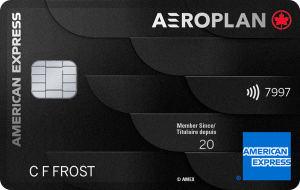
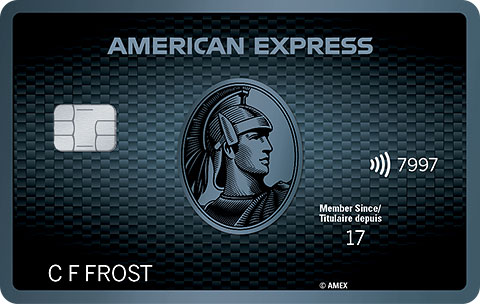
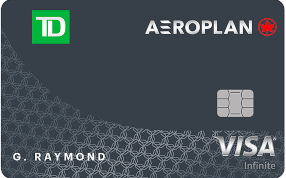

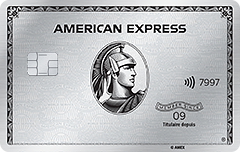
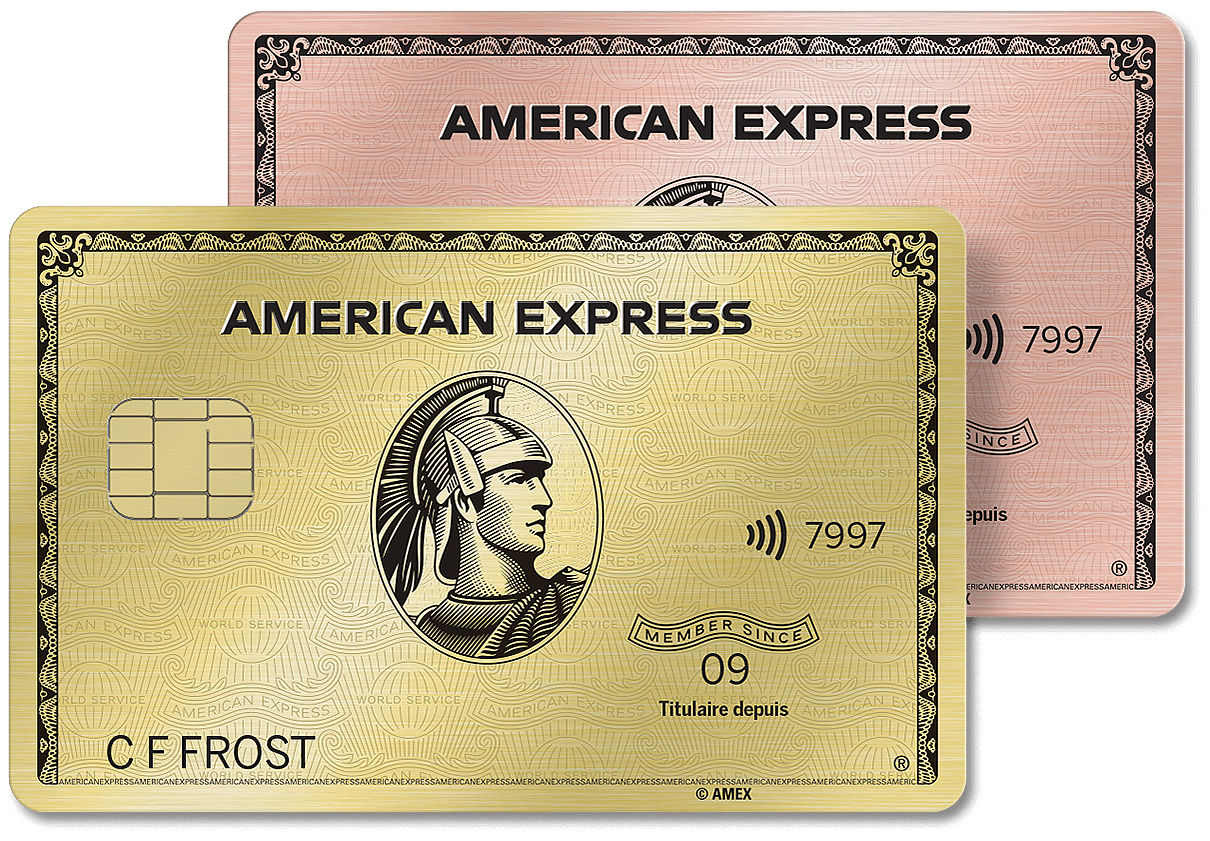
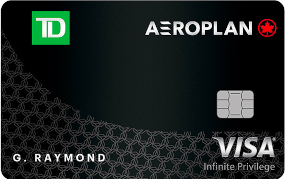
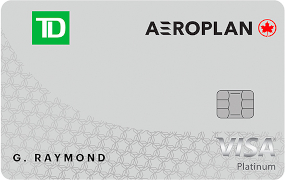
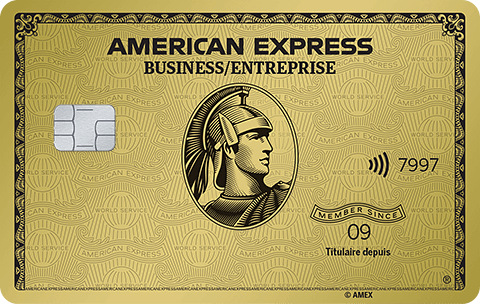
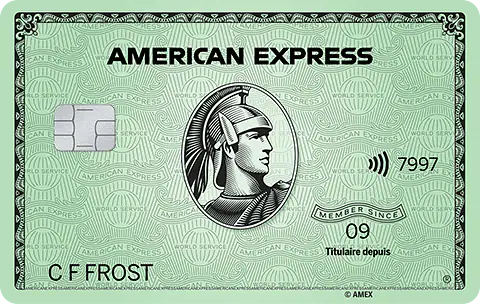

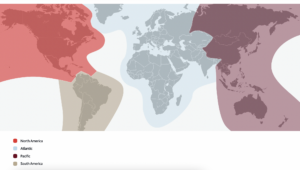

Could you give more details on #18?
Hi, I’ll do a complete guide for sure. In the meantime what else would you like to know?